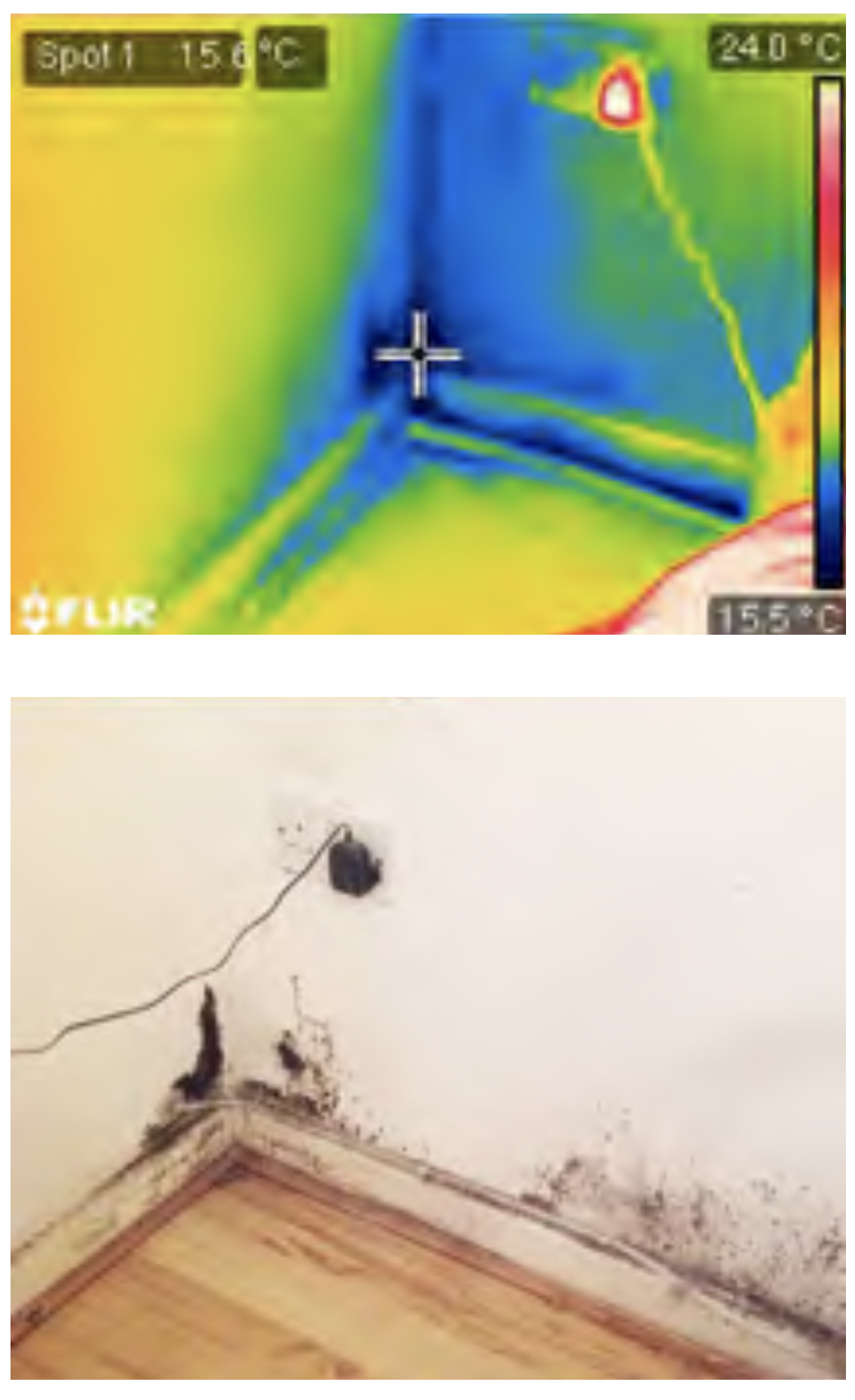- Home
- Scotland's changing climate
- Urban Housing in Scotland
- Maintenance
- Ventilation
- Airtightness
- Insulation
- Lofts - insulation at ceiling level
- Lofts - insulation at rafter level
- Cavity wall insulation
- Solid Walls: Internal vs External Insulation
- Internal Solid Wall Insulation (IWI)
- External Solid Wall Insulation (EWI)
- Timber frame retrofit
- Windows and doors
- Openings in 'historical' buildings
- Openings in 'non-historical' buildings
- Ground floors
- Suspended floors
- Suspended floors - from below
- Suspended floors - from above
- Solid floors
- Insulation materials
- Building science
- Space heating
- Solar energy
- Product Selector
Thermal Bridging
Thermal bridging occurs when one part of the construction is more conductive to heat than another. The overall U value might say one thing, but the actual heat loss is worse in these areas. An example might be in a timber frame wall where, for structural reasons, there are several timber studs together (and therefore no insulation) or in a retrofit where internal wall insulation is omitted from some areas because they are difficult to access.
Psi - the Measurement of Thermal Bridging
Thermal bridges have their own value (psi, measured in W/mK), which needs to be added to any overall heat loss equation to give an accurate picture of the whole building.
Repeating and Non-repeating
In the past, these anomalies were generally ignored or, at best, treated with generic ‘get-arounds’. Nowadays, more people are aware of the issue, and it is beginning to be taken more seriously. There are two types: repeating and non-repeating.
• Repeating thermal bridges, as their name suggests, form repeating and generally regular and known points, such as where fixings penetrate the insulation in external wall insulation. These fixings transmit more heat than the insulation around them, so a psi value has to be established, multiplied by the number of fixings and the total added to the overall heat loss of that section of wall.
• Non-repeating thermal bridges are also called linear thermal bridges and tend to occur where elements of construction meet, such as at the junction of floor and wall, wall and roof and around openings. The problem often arises because certain elements are needed for structural reasons, and it isn't easy to fit enough insulation around them.
• Much of good practice involves identifying and resolving these thermal bridges. This is because they allow more heat out of the building, but more importantly, they create relatively cold internal surfaces. These can lead to condensation, stains and mould, with unwelcome implications for human health and the durability of the building fabric.
Corners form their own sort of thermal bridge and are often colder than adjacent wall areas. The mould here is also probably related to being typically behind a sofa with little air movement. The image in the middle is a thermal or thermographic image (infrared), which shows the surface temperatures of the surroundings.

